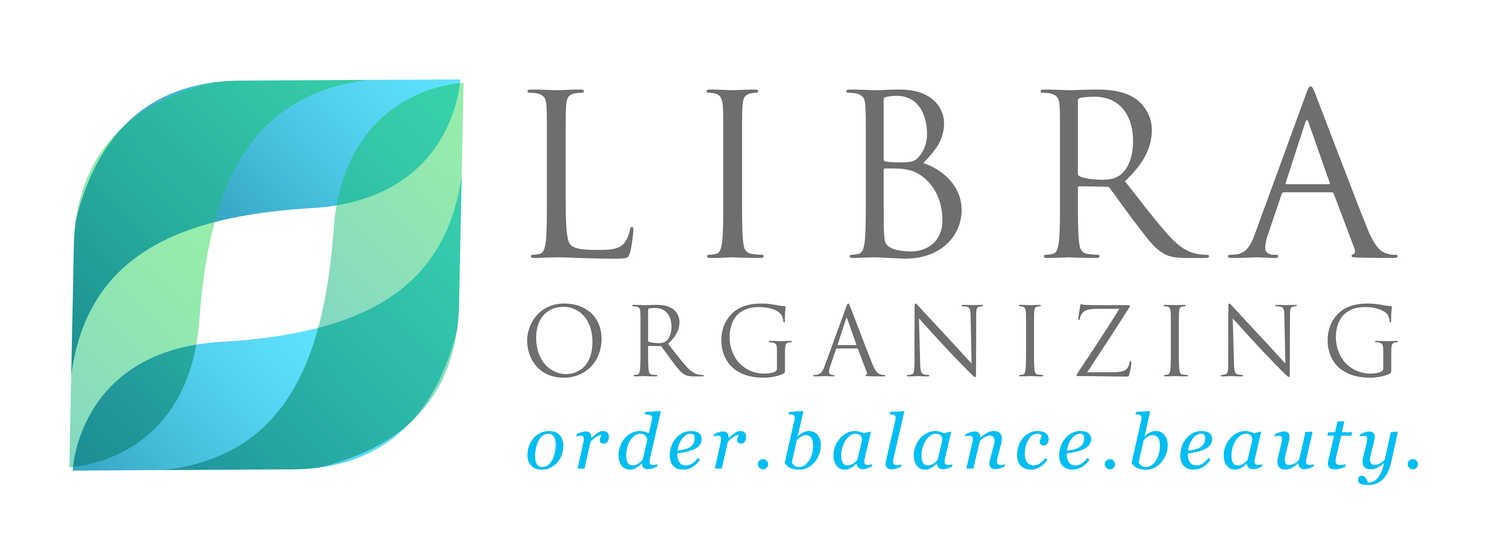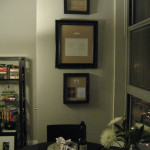With tax time just around the corner, many of my clients are facing their files - and they're not happy. Organizing a bedroom closet, kitchen or garage might have a big visual payoff, but nothing is as stressful or as risky as having disorganized paperwork. If you don't have safe storage for critical documents and systems in place for tracking finances and paying bills, you are probably continually worried about your financial status - and rightly so. Although I tailor my organizational and decorative solutions to each client based on their individual needs and preferences, there are some basic tips for organizing personal papers that are universally helpful. I present some of them here...
Separate personal and professional files
If you have a home office where you conduct business or store professional materials, separate them from your personal items. Store them in a separate drawer or file box.*
Set aside sentimental items and memorabilia
Everyone has a stash of treasured letters, cards, photos and other personal items. First, eliminate anything that isn't truly valuable to you (e.g. greeting cards with only a signature, photos developed from exposed film, etc.). Then store your truly meaningful items in a bin or box. (Check out the options available at The Container Store: http://www.containerstore.com/shop/storage/storageBoxes/naturalMaterials). Whether you keep the container in a closet or out in the open, it will conceal the clutter - and bring you pleasure each time you decide to open it up for a trip down memory lane.
Categorize and subcategorize files
Again, the first step is to destroy and discard any papers you may have kept unnecessarily. Most of my clients hold on to credit card and ATM receipts, bank statements, bills and invoices long beyond the point when they have paid or otherwise handled them. In this digital age, you can always get a copy of your statement online. Once you've recorded your purchase, balanced your checkbook or paid your bill, you can and should shred the paper copy. Only save a receipt if you think you might return the product or if it's a business expense for your tax folder.
Next, take a broad view of your life on paper and create folders for each category, dividing them into subcategories as appropriate. As a general example from which to begin...
CRITICAL DOCUMENTS
Store your birth certificate, passport, social security card, marriage certificate, jewelry appraisals, etc. in a safe place. Some people choose to lock them in a safe, in a hidden location in the home. Don't store these items in satellite locations such as a bank safe deposit box - you might need them in a hurry some day.
Make copies of these documents and store them in a separate location - for example, in a dedicated file in your file drawer or box. This is a true life-saver in the event that you lose one or more of the original documents.
TAXES
- Old tax files - We are legally required to save tax documentation going back 7 years (check with your CPA to confirm this applies in your situation). If you have limited space for storage, destroy and safely discard any tax returns and supporting documentation from 2002 or earlier.
- At the front of your tax section, keep an open folder for the current year. As you collect pertinent documents (e.g. business expense receipts, government-provided tax documents, receipts from charitable donations, etc.), place them directly into this folder. It's a good idea to keep sections within the folder (for business expenses, loan-related information, etc.) so that you have an organized folder at year-end rather than an overwhelming mess.
INSURANCE
Keep separate folders for auto, home, life, disability, etc. You don't need to collect invoices here. You just need your policy information and any updates to it in case you need to make a claim. Keep old claim documents here, too.
BANK AND CREDIT ACCOUNTS
Like insurance, you don't need to save statements or invoices from checking, savings or credit card accounts. Just hold on to your initial agreements and any documentation regarding claims, disputes or changes to your policies. Keep separate folders for each type of account and each bank. (e.g. Bank of America checking, Bank of America savings, American Express, Visa, etc.).
INVESTMENTS / RETIREMENT ACCOUNTS
Ditto for your stock investments, IRAs and 401Ks...save the policy or initial paperwork, and discard the statements once you've taken a look.
OTHER
Other categories you might require include Children (school and medical records), Pets (adoption and medical/vaccination records), Car (lease, or title and purchase information) and Home (rental agreement, or deed and mortgage documentation, as well as home improvement records).
Mirror your hard file organization system in your electronic files
Chances are, you have a home or personal computer on which you store duplicative or additional personal records. Organize your electronic files using the same categories and subcategories as your paper files. This way, you'll never wonder where you stored anything.



